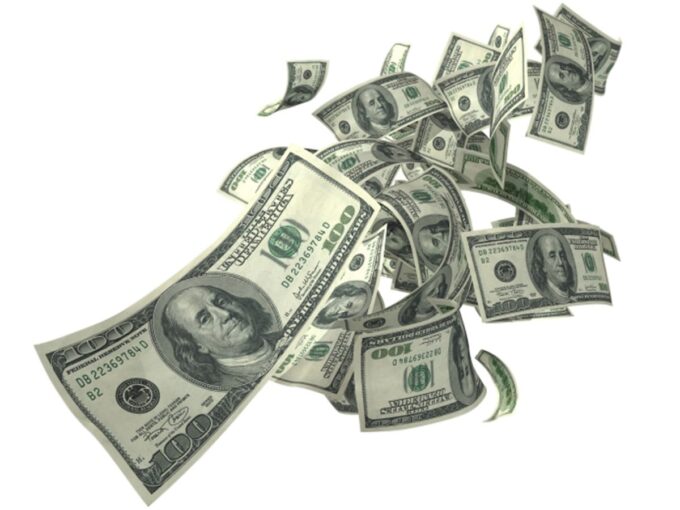What is cash flow? Cash flow is the amount of cash that a business has available. This cash can be used to pay for expenses, such as rent and utilities, or it can be saved up in order to reinvest into the company.
When cash flow becomes an issue, your business will experience cash shortages and need to take out loans. There are three main factors that affect cash flow: revenue (the money coming in), expense (the money going out), and assets (what you have left over).
In this post we will discuss how to manage cash flow effectively and when to include the help of the professionals, such as ScotPac and others, so your business does not become stressed!
What is cash flow?
Cash flow shows how much money is flowing in and out of a company. If you have cash coming in more than what goes out, your cash flow is positive. This means you have more money on hand to buy investments or spend on upgrades.
Effectively, having more money coming in will help boost profits more quickly since the business has the capital necessary to invest for increased growth without taking out loans.
Cash flow typically comes from interest earned on savings account deposits which are then reinvested into the business or used for short-term operating expenses where it can be paid back quickly with new income that is brought into the company.
Why does cash flow matter?

Cash flow is an important measure of business or private financial health because it measures how quickly a company can pay its ongoing obligations. An analysis of cash flow isn’t designed to provide investors with details about the nature of the company’s specific investments, but rather to give them an idea about the stability and ongoing opportunity for these investments.
There are several ways that cash flow can be analyzed including operating, investing, and financing activities as well as key ratios such as current ratio, quick ratio, debt-to-equity ratio, liquidity ratio, etc…which depend on your primary concern.
In every situation, though some type of operational assessment needs to be made since good management makes a difference in a company’s ability to handle changes in markets.
Positive cash flow and negative cash flow
Positive cash flow is the idea of having more money coming in than going out. Formally, this means that the company creates more money through its operations than it uses up. Positive cash flow occurs when your monthly overhead costs are less than or equal to your monthly income. Your positive cash flow would appear on the left side of an equation.
Negative Cash Flow is when you need to take on debt in order to cover expenses, or when you spend too much with nothing saved for emergencies or retirement savings at the end of the month. It only happens if your monthly expenses exceed your monthly income, which appears on the right side of an equation.
How to manage cash flow effectively?

Make sure to keep up with bookkeeping
Bookkeeping is the process of maintaining business records. This includes tracking how much money is being spent, where it’s being spent, and for what reasons it’s being spent. Allocate both the receipts and payments to a category so you know how much cash was available to spend at any point in time. Plot cash flow on a graph with each year as a separate line item – this can help illustrate declines over time or good points for investment.
Monitor your cash flow regularly
Monitoring your cash flow regularly will allow you to identify patterns in your spending. If you can identify negative responses, these should be countered with an adjustment of income or debt financing.
Patterns that are not harmful to your finances should also be recognized, and repeated incomes should be maximized either through investing for the future or cutting costs where possible.
This is because all expenses lead back to some stream of funding – even if it’s debt added onto a credit card bill each month at 18%. Monitoring this information brings clarity on how much money is coming in vs going out, which helps make future decisions.
Know if you need to increase cash flow

If you are not sure whether you need to increase your cash flow or not, it is best to start by evaluating your current spending and income. You can track this information using a budgeting tool or app. If your income is less than your expenses, then you will need to find ways to bring in more money or reduce your spending.
There are a number of things you can do to increase your cash flow, including increasing your income, reducing your expenses, and improving the efficiency of how you manage your money.
Minimize or cut costs
There are a few measures that businesses can take in order to minimize or cut costs. One is to manage cash flow effectively. This can be done by keeping a close eye on spending, making sure payments are made on time, and looking for ways to reduce expenses.
Another way to save money is by being mindful of the types of products and services being offered. Sometimes it’s possible to negotiate better deals with suppliers or to switch to less expensive options.
Sell or lease idle equipment

Leasing or selling idle equipment can be a great way to manage your company’s cash flow. It can help you free up funds that can be put towards other business expenses, or it can help you bring in some extra revenue. Here are a few tips on how to go about doing it:
-Be strategic about who you sell or lease to. Choose buyers or lessees who will get the most use out of the equipment and who will be able to pay for it in a timely manner.
-Make sure you have a solid contract in place that spells out all the terms and conditions of the sale or lease agreement. This will help avoid any misunderstandings down the road.
Ask for deposits or partial payments on large orders or long-term contracts
There are a few ways to manage cash flow when it comes to large orders or long-term contracts. One option is to require deposits or partial payments at different stages of the order or contract.
This helps ensure that you always have some money coming in, which can help with cash flow. You can also ask for payment in advance, especially if you know the customer is good for it.
Finally, be sure to invoice promptly and follow up if there are any delays in payment. By taking these steps, you can help ensure that your cash flow remains consistent and healthy.
Hire a professional to help with cash flow if needed

It is important to consult with a financial advisor to get professional help with cash flow if needed. Among professional companies is ScotPac, which is a great resource for small businesses in need of cash flow assistance. They offer a variety of services, including invoice factoring and loans, to help you get the cash you need to keep your business running smoothly.









